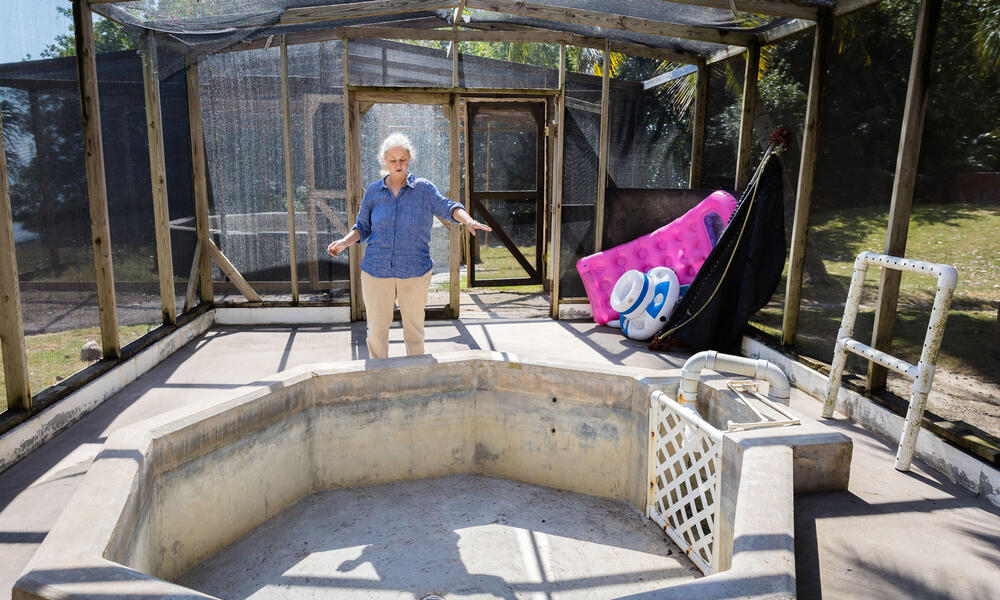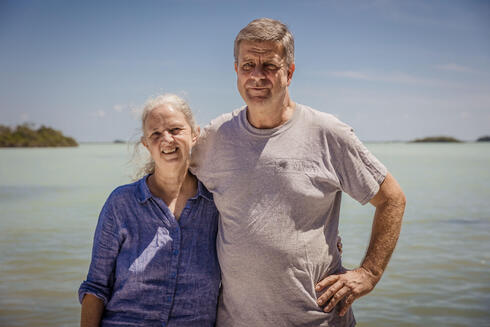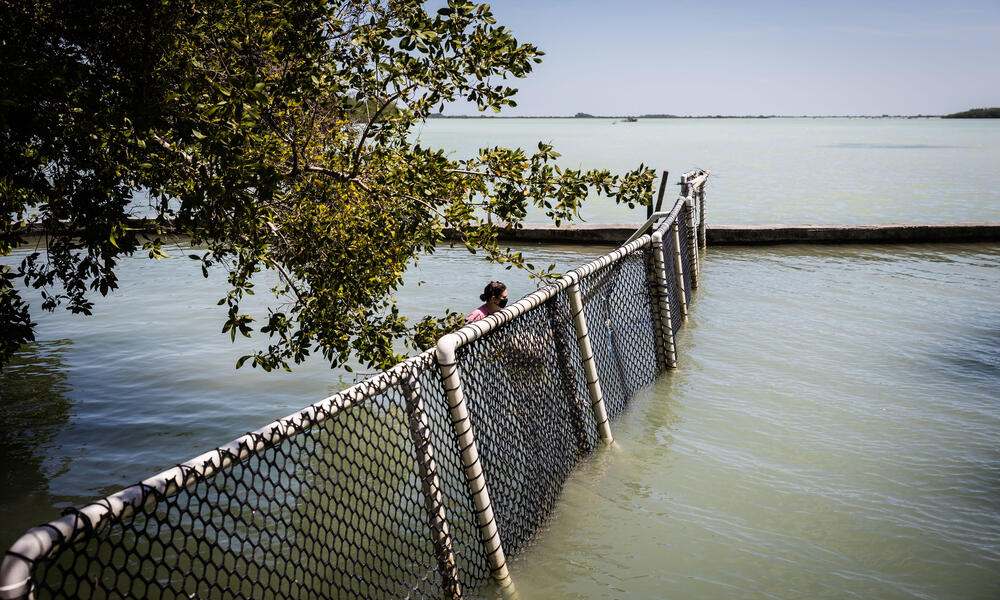“We are still relatively successful at being able to get a lot of these back to the wild,” Walker says. “A lot of times they just need somewhere safe where they can recover. Safety, food, no stress.”
Orphaned manatees often take much longer to make that return. Manatee calves and their mothers maintain physical contact 100% of the time, so separation requires the treatment of a baby’s mental health alongside any injuries or ailments.
A youngster at Wildtracks begins its rehabilitation journey in a small pool with a person in the water around the clock to offer comfort simply by existing in the same space.
“That's the way you stabilize a calf and make it want to live, give it the will to live,” Walker says. “That in-water presence has made the difference between struggling to get a calf to feed and it reaching the point where it's quite happy to feed. It needs to feel trust.”
The manatee receives a pool floaty—the sea cow equivalent of a stuffed animal—that stays with them as they move from small pool to large pool to fenced-off lagoon water. The animal receives formula to start and graduates to much-anticipated “banana smoothies” that pack the nutrients and fats necessary to put on weight. Detailed, individualized care plans and a soft release into an enclosed portion of the lagoon before the wild have helped Wildtracks successfully rehabilitate these endangered animals. It’s why Mitch and Lucky—bobbing near the shore—needed no intervention years after their release.


